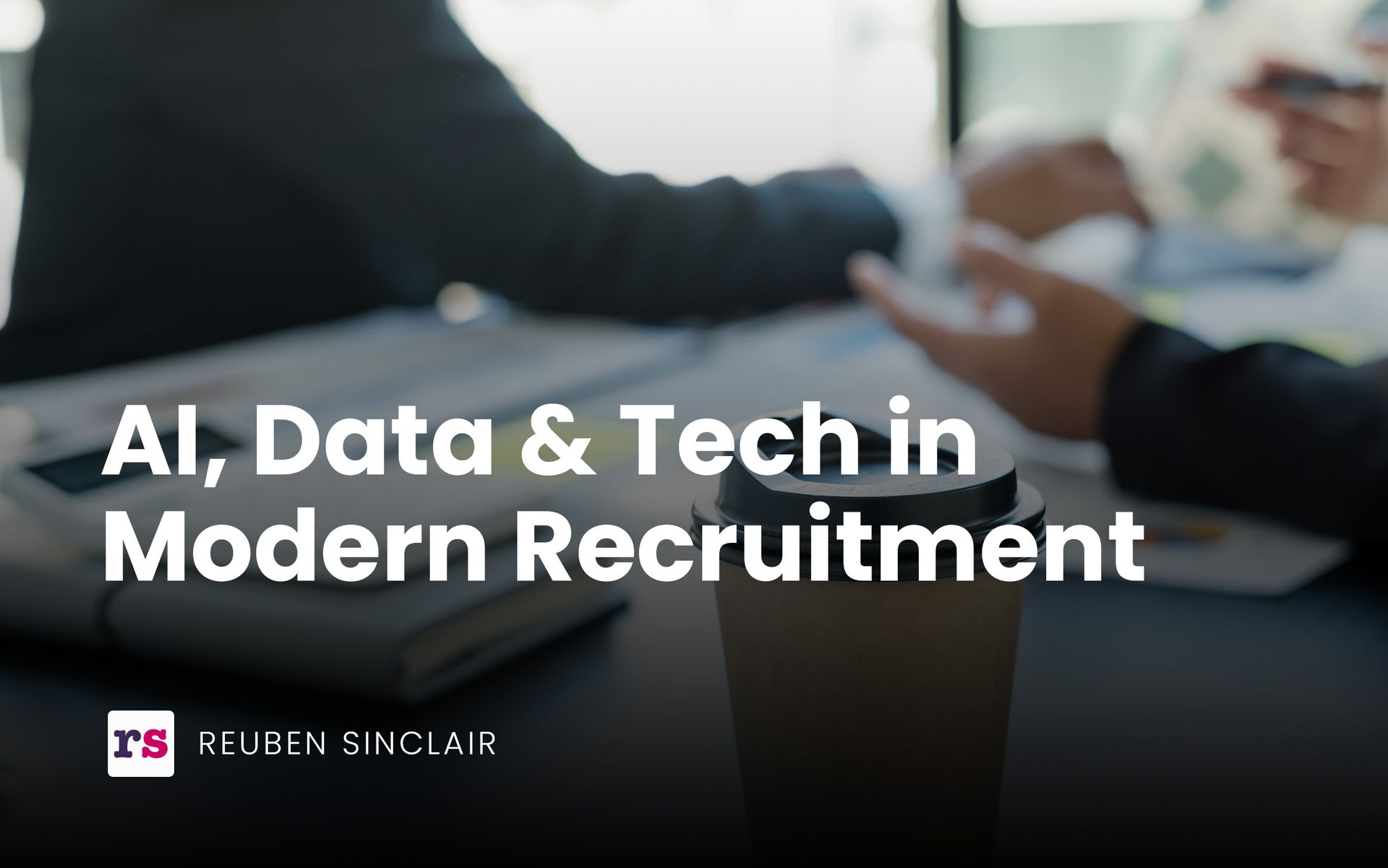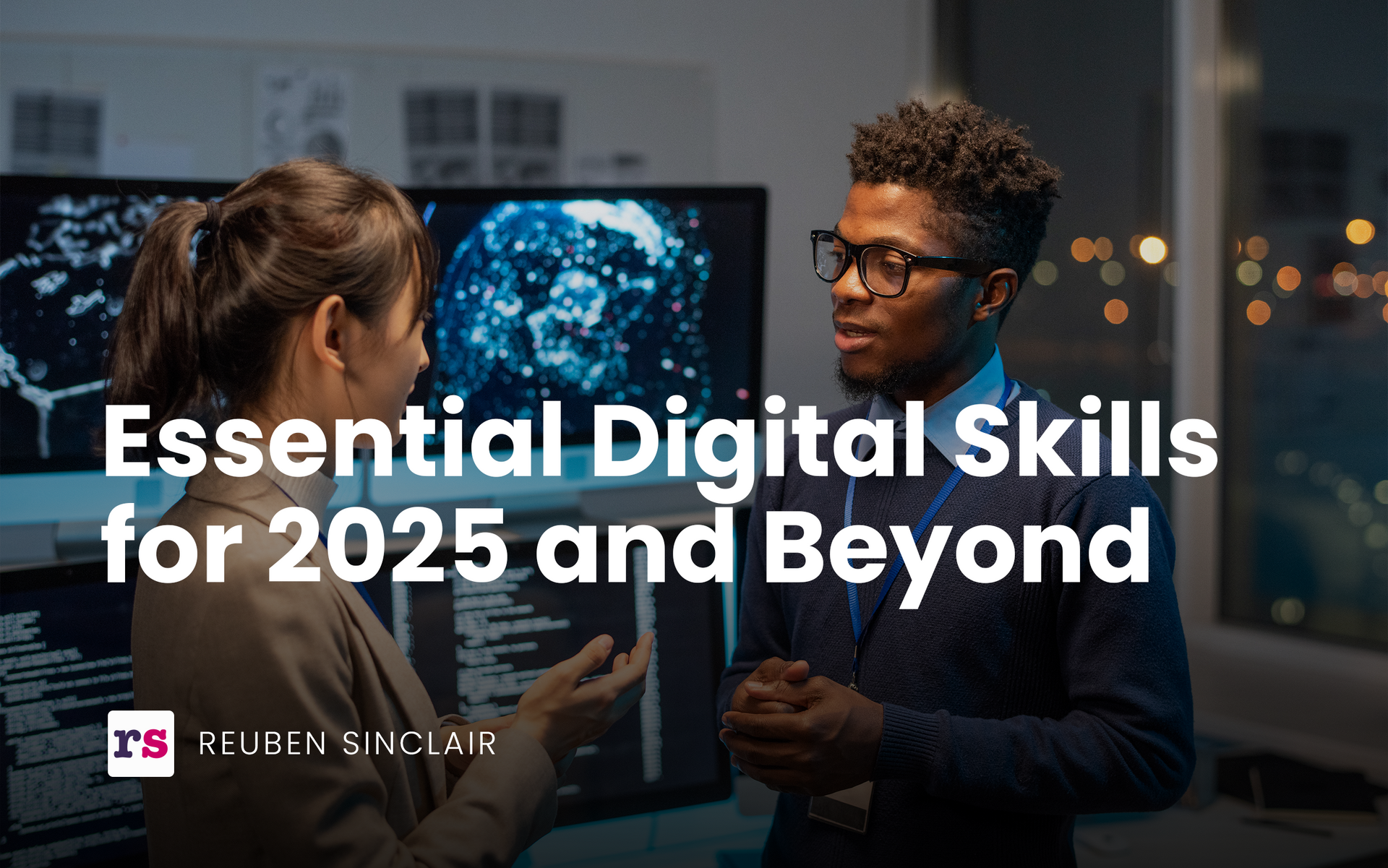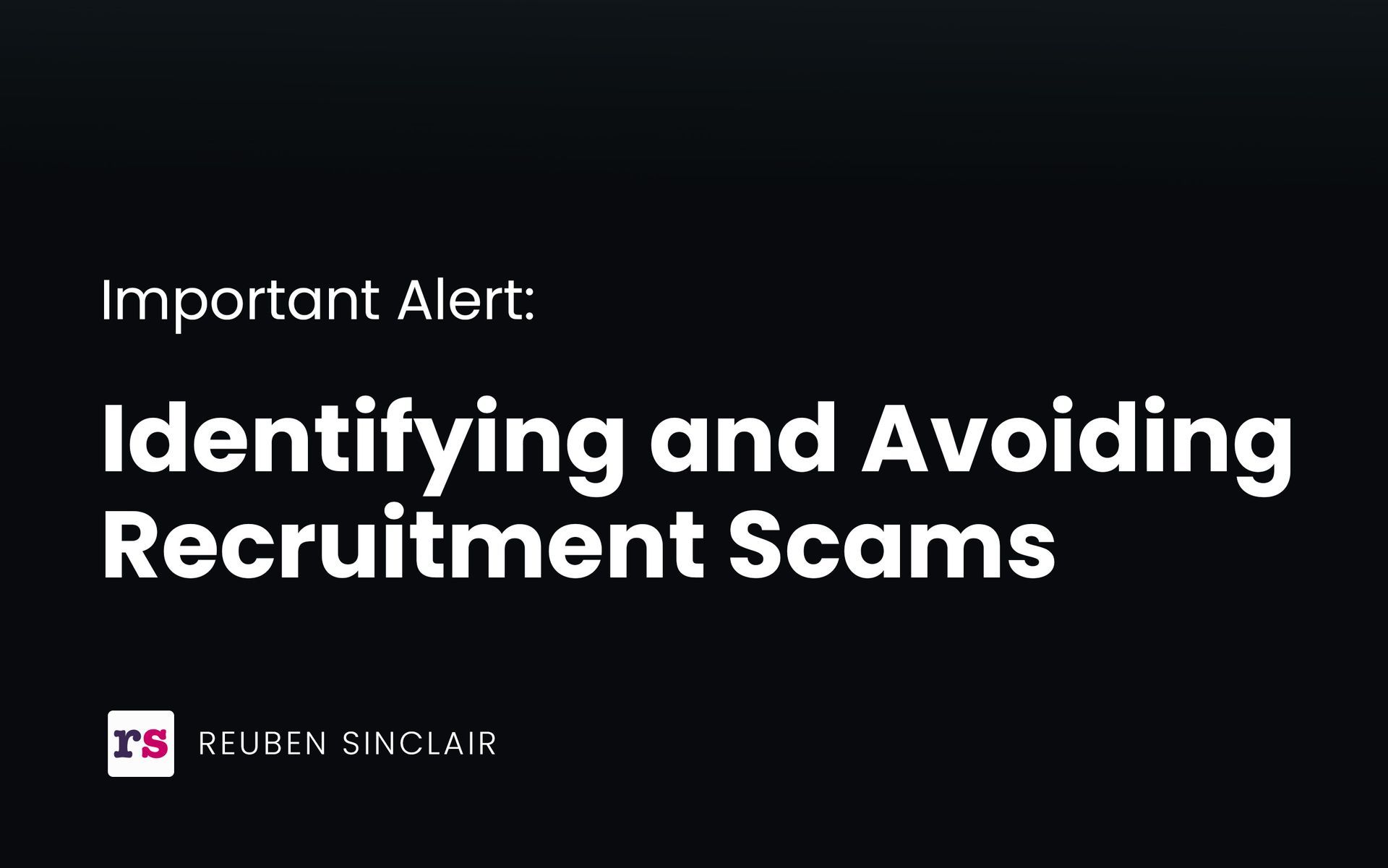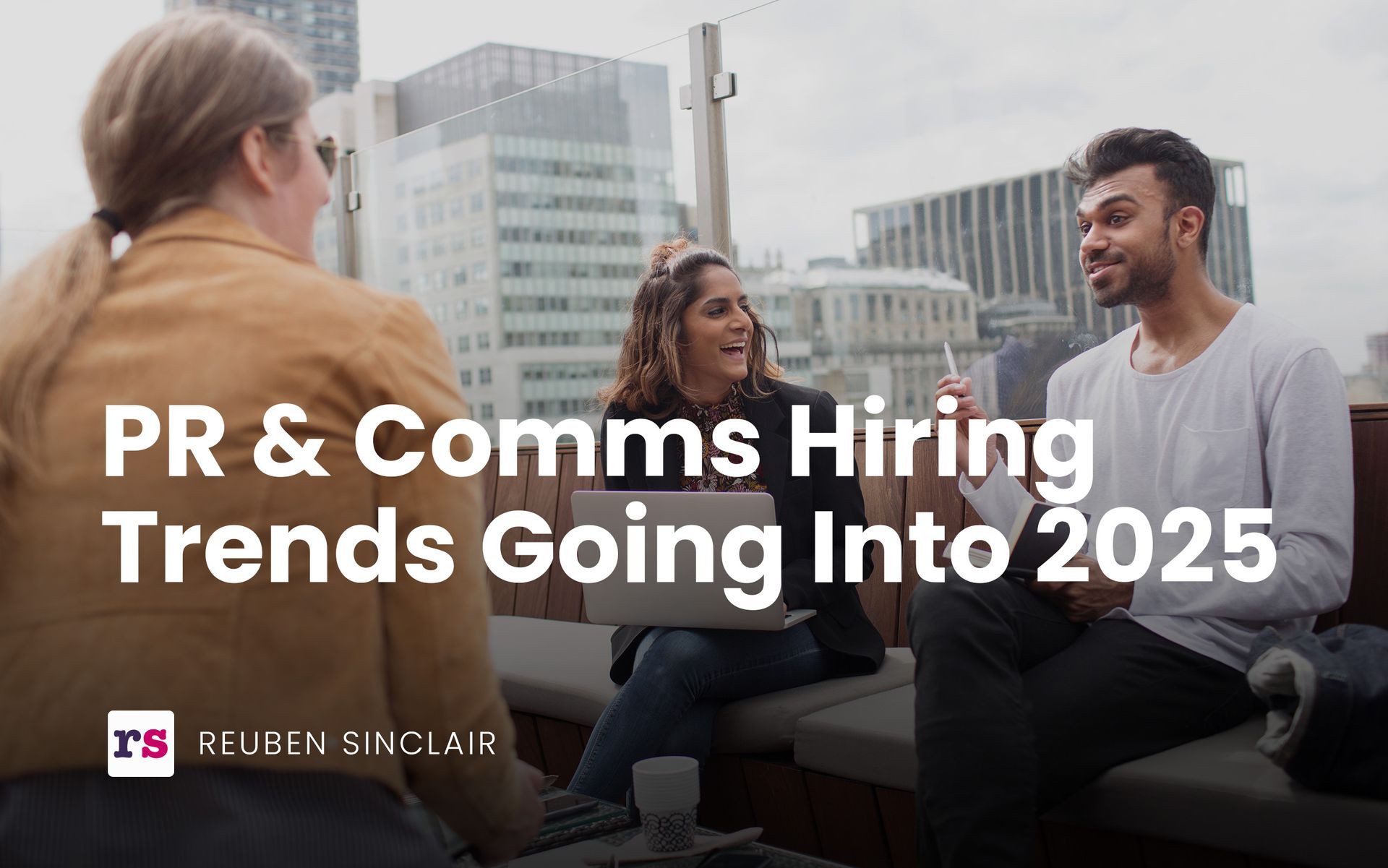⚠️ SECURITY ALERT: Messages via WhatsApp or Telegram offering jobs are fraudulent, and not from Reuben Sinclair. Report suspicious activity to Action Fraud.
Transactional vs Embedded Recruitment
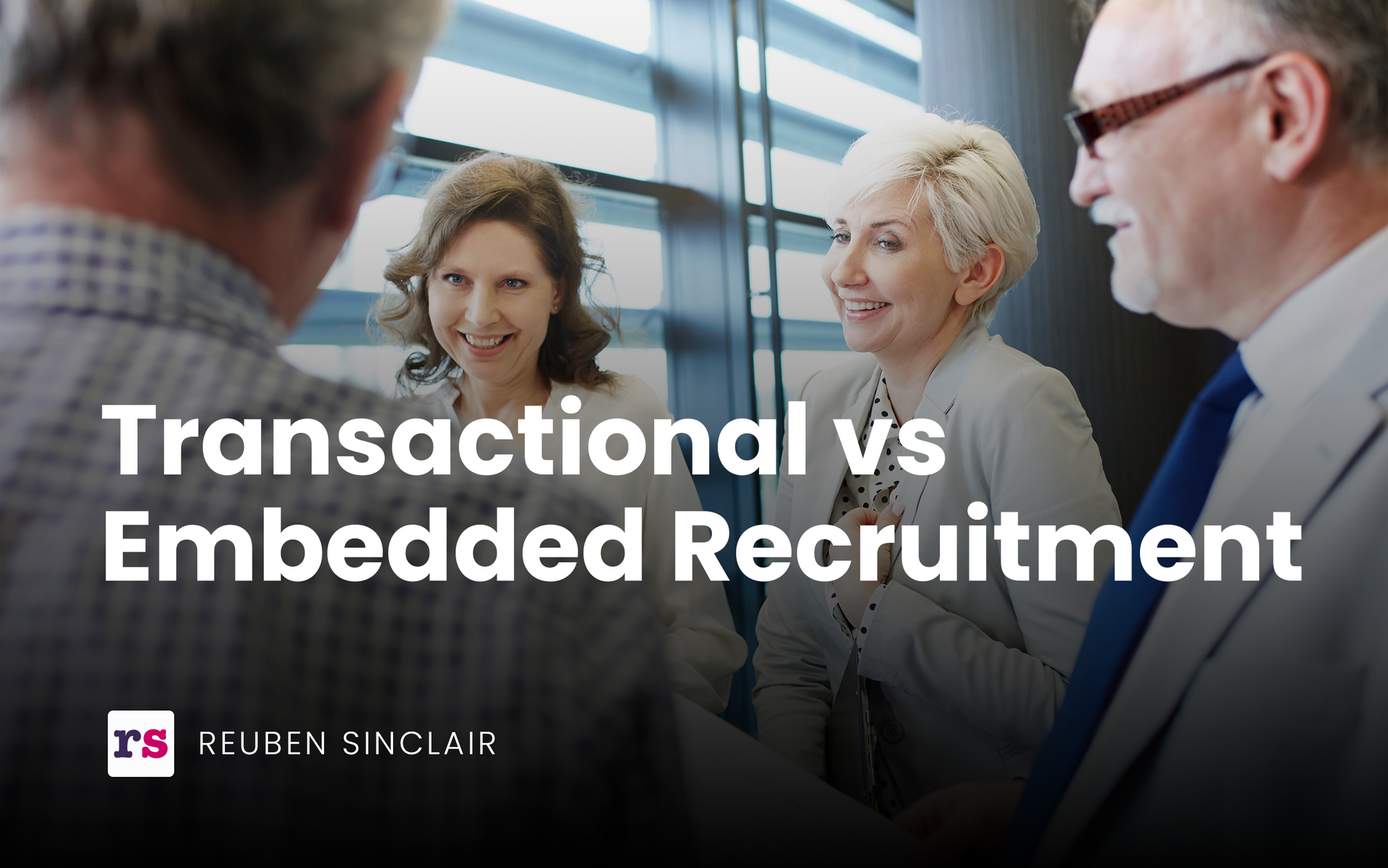
Transactional vs. Embedded Recruitment in 2025
How we recruit has never been more critical - especially in the world of PR and Communications.
Employers are grappling with meeting the ever-changing expectations around flexibility, culture, and career progression. In 2025, the question I hear time and time again from business leaders is:
Should we continue with a purely transactional recruitment model, or is an embedded approach the way forward?
I’m Alexandra Stevens, Business Director and Head of PR and Communications Recruitment, and in this post, we’ll explore the benefits and drawbacks of both methods, reveal how the market has shifted, and share why an embedded model might just help you build a more engaged, diverse, and fulfilled team.
Defining Transactional vs. Embedded Recruitment
Transactional Recruitment
Transactional recruitment is the traditional, project-based approach to hiring. It’s like shopping for a single item off the shelf - when you need a new team member, you put out a requisition or call up an agency, collect CVs, make a hire, and then step away until the next vacancy arises. It’s often fast and functional, focusing on short-term role fulfilment.
Pros of Transactional Recruitment
• Speed: When a role needs filling urgently, it’s a quick fix.
• Simplicity: You pay for what you get—usually a one-off fee per hire.
• Best for one-off roles: If you rarely recruit, transactional can feel cost-effective.
Cons of Transactional Recruitment
• Weaker understanding of culture: Because the partnership is short-lived, recruiters may lack a deep insight into your company’s ethos and long-term needs.
• High churn risk: This model can sometimes miss vital aspects like flexible working demands or cultural fit, leading to higher attrition.
• Minimal strategic input: You lose out on longer-term talent planning or workforce insights.
Embedded Recruitment
Embedded recruitment (sometimes called in-house or on-site) involves partnering with a dedicated recruitment function that becomes an extension of your HR or talent team. These professionals immerse themselves in your organisation’s culture, values, and day-to-day operations—often for an extended period rather than one-off projects.
Pros of Embedded Recruitment
• Deeper alignment with your brand: Embedded recruiters truly “live” your culture and can better communicate it to potential hires.
• Proactive talent planning: They can forecast hiring needs, build pipelines, and implement strategies aligned with your business goals.
• Better candidate experience: Candidates get a smoother, more personal process, increasing their likelihood of accepting offers and staying longer.
Cons of Embedded Recruitment
• Ongoing investment: You’ll typically pay a monthly retainer or have a long-term contract, which some organisations initially see as costlier.
• Cultural fit required on both sides: If your embedded recruiters don’t align well, it can cause friction in the partnership.
• Not always ideal for very small firms: If you only hire once or twice a year, an embedded arrangement may feel too intensive.
Why the Recruitment Model Matters in 2025
The reason we’re seeing a surge in popularity for embedded recruitment boils down to talent expectations—and in PR and Communications, these expectations are sky-high. The year 2025 marks a critical point where employees not only seek meaningful work but also demand a workplace that respects their unique needs around flexibility, location, and hours.
“Many employers tell us they offer flexible working but when asked what that looks like, they say they allow their team to work from home twice a week… However, if those employers were to increase this to three days per week, they would meet the needs of over double the number of people.”
This sentiment (from one of our recent surveys) underscores just how nuanced flexible working can be. It’s no longer about ticking a box saying “remote allowed.” Teams want real choice—a conversation that merges location flexibility with adaptable hours.
The Flexibility Factor
• Part-Time & Job Sharing: Over a third of PR and Communications professionals rate part-time work as important, primarily aiming for a four-day week. This is a relatively modest request that many companies overlook, leaving qualified candidates on the table.
• Parents & Carers: Policies for parents and carers have improved, but we must remember that flexible working benefits everyone, not just those with caring responsibilities.
• Attracting Top Talent: If your hiring approach doesn’t allow for tailoring these flexibility options to individual candidates, you risk losing out to more accommodating agencies or in-house teams.
When you adopt an embedded recruitment model, recruiters are integrated into your culture and can promote the genuine, nuanced flexibility you offer. They become ambassadors of your brand values—making sure candidates truly understand the scope of what’s available, rather than reading a generic job spec listing “2 days WFH.”
Transactional vs. Embedded in a Dynamic PR Market
Transactional: Quick Wins, Longer-Term Friction
For many years, PR and Comms roles were filled via a purely transactional model. A vacancy pops up, an agency gathers CVs, interviews happen, role filled. Done. In some scenarios—especially niche, project-based work—this still makes sense. Yet, the challenge arises when employees’ expectations (for instance, around flexible hours or remote work structures) aren’t adequately communicated. You might fill the role quickly only to discover the new hire leaves within a year or so, citing poor work-life balance or misaligned cultural fit.
Embedded: Deeper Relationships, Sustainable Growth
On the flip side, embedded recruiters live and breathe your brand. Because they’re regularly on the inside:
• They know your day-to-day: They see if your “twice-a-week WFH” policy is flexible enough or if it needs adjusting to truly engage top PR talent.
• They anticipate changes: By monitoring departmental shifts, they can proactively source talent before a last-minute scramble.
• They build trust: Potential candidates feel they’re speaking to a genuine representative of your team, fostering transparency and loyalty from the get-go.
In PR and Communications—an industry where reputation is everything—these deeper relationships can make the difference between a high-calibre candidate choosing you or heading to a competitor offering slightly better conditions.
Real-World Impact: Why Embedded Can Help Retain Talent
1. Customised Onboarding and Mentorship
Embedded recruiters can tailor onboarding to each new hire, which is essential in roles like PR and Comms where building relationships and understanding brand voice are key.
2. Preventing Misaligned Expectations
Because they’re part of the fabric of your organisation, embedded recruiters act as informed advisors, bridging any gap between what’s promised in an interview and what’s delivered on day one.
3. Ensuring Ongoing Flexibility Conversations
As I often tell employers: “Never assume your flexible working policy remains fit for purpose forever.” Embedded recruitment teams can keep a finger on the pulse, tweaking policies as staff needs evolve—making you less likely to lose valuable talent to a competitor.
4. Holistic View of Your Employer Brand
When someone’s embedded, they see beyond just the hiring process. They notice how you celebrate successes, how feedback is given, and how promotions are awarded. This big-picture perspective helps refine how you present yourself to top candidates in the PR space.
Balancing Cost and Benefit
I’m frequently asked about cost: “Alexandra, doesn’t embedded recruitment mean a bigger upfront investment?” Possibly, but if you factor in the longer-term savings from reduced turnover, improved cultural fit, and a more consistent candidate pipeline, the maths often works in favour of embedded or at least a hybrid approach.
Transactional
• Lower immediate outlay but potential for hidden costs, such as repeated hires due to turnover.
Embedded
• Slightly higher monthly retainer but with strategic advantages:
• More robust candidate pipelines
• Lower attrition rates
• Stronger employer branding
What This Means for PR & Communications Leaders in 2025
The PR and Communications sector thrives on authenticity, creativity, and credibility.
We’re effectively the storytellers and reputation guardians for our businesses or clients. That’s why it’s so crucial to recruit not just skilled professionals but people who mesh well with the brand ethos and are content with the working arrangements.
• For CEOs and Heads of Department: An embedded recruitment partner could help tailor flexible working policies, ensuring they resonate with modern professionals. By illustrating your inclusivity and adaptability, you can stand out in an increasingly competitive talent market.
• For HR and Talent Teams: If you’re stretched thin, an embedded model may ease that pressure. You’ll have a dedicated team (or individual) on the ground, proactively sourcing and nurturing talent—resulting in a more strategic approach rather than reactive hiring.
• For Candidates: Whether you’re a job-seeker or a passive observer, having an embedded recruiter on the other side can feel more transparent and human. They’ll have a clearer sense of the role’s real responsibilities, the company’s appetite for flexibility, and the growth trajectory on offer.
Final Thoughts: Choosing the Right Model
Should you go fully embedded or stick to transactional for 2025?
The answer often depends on the volume and complexity of roles, your budget, and your strategic objectives. However, in an industry that thrives on relationships and where flexible working is increasingly non-negotiable, an embedded model offers a level of depth that can set you apart - particularly if you’re looking to attract (and retain) top-tier PR professionals.
Ultimately, your choice of recruitment model should align with the future you envision for your organisation - one where employees feel supported, valued, and have room to grow. In a year where up to a third of professionals report that their flexible working needs aren’t met [CIPR Population Report], there’s a clear opportunity for forward-thinking employers. Get your recruitment approach right, and you could attract a significant portion of those seeking better flexibility, improved culture, and a genuine sense of belonging.
If you’d like to discuss how an embedded approach might look in practice - or if you’re curious about optimising a transactional model for today’s workforce - feel free to get in touch. My team and I are always happy to share insights on what’s working across PR and Communications recruitment in 2025.
- Alexandra Stevens, Business Director & Head of PR and Communications Recruitment
Stay ahead of the curve.
Keep up to date with the latest in recruitment insights before they go public.
© 2025 Reuben Sinclair Ltd. Registered office 124 City Road, London, EC1V 2NX. Registered in England, number 06280364.

